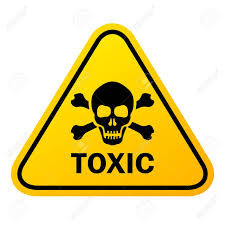[vc_row][vc_column][trx_section box=”yes”][trx_title align=”center” color=”#d9ae4c” weight=”700″]
Household Toxicity
[/trx_title][trx_title align=”center” color=”#d9ae4c” weight=”700″]
What to Watch Out for In Your Home
[/trx_title][trx_title type=”4″ align=”center” color=”#434544″ weight=”700″ bottom=”mini”]by Dr. Eileen Savier CVA, CVCH[/trx_title][vc_column_text]
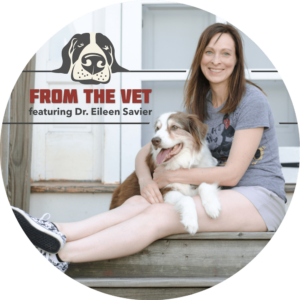
What are you eating?
You know the feeling – your pup is chewing on something and you realize that don’t know what? Mulch? Stick? Shoe? Sock? Favorite toy? And the guessing game (and at our house, the chasing game) then begins… Many household products are ingested accidentally by dog (less commonly by cats) and in general, the prognosis for household product ingestion is good with appropriate decontamination of the patient and supportive care. But here are a couple things to be on the lookout for (as they are considered COMMON ingestibles) and what to do if you find out that your pup has gotten ahold of one of these products.
Common Toxicities
Alpha Lipoic Acid (ALA)
This supplement is used for diabetes. There is a very narrow safety margin in dogs and cats (cast are more sensitive). This can cause acute kidney injury and liver toxicosis.
Tea Tree Oil
Toxicosis has been reported with concentrated oil is used as a holistic remedy. Signs include depression, weakness, difficulty walking, and muscle tremors. Rarely coma and increased liver enzymes have been reported.
Batteries
Several types of batteries cause corrosive injury or current induced injury potentially resulting in a perforation of the stomach or intestines. This causes decreased appetite, abdominal pain, increased respiratory rate and fever.
Paintballs
Paintballs contain polyethylene glycol, sorbitol, glycerin, gelatin, and other ingredients that can result in free water loss due to increased sodium. This can cause central nervous system and gastrointestinal disturbances.
Compost (and/or moldy food)
Tremorgenic mycotoxins can interfere with the release of neurotransmitter amino acids. Signs include central nervous system and gastrointestinal disturbances.
What to DO?
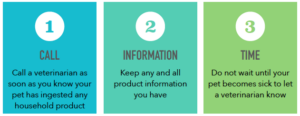
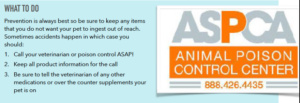
[/vc_column_text][/trx_section][/vc_column][/vc_row][vc_row css=”.vc_custom_1533135180690{margin-top: 40px !important;}”][vc_column css=”.vc_custom_1533134942241{background-color: #d9ae4c !important;}”][trx_title type=”2″ align=”left” color=”#f6f2e4″ left=”20″ right=”20″]About Dr. Eileen Savier[/trx_title][vc_column_text css=”.vc_custom_1533135315368{padding-right: 20px !important;padding-bottom: 30px !important;padding-left: 20px !important;}”]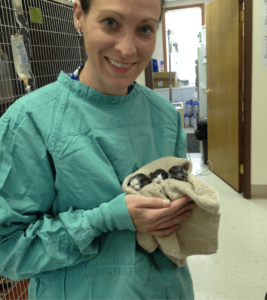 Barks & Recreation is proud to feature Dr. Eileen Savier CVA, CVCH as our Veterinary Blogger in our “From the Vet” Series. Currently part of the team of doctors at Keystone Veterinary Clinic, Dr. Savier is a 2012 Graduate of the Ross University School of Veterinary Medicine, She completed her clinical experience at The Ohio State University and after veterinary school she pursued further education and certification in Veterinary Acupuncture, Chinese Herbal Medicine, and Fear Free veterinary visits. Dr. Savier has a special interest in integrative medicine, animal behavior, and internal medicine and is committed to improving animal health care by integrating Eastern and Western philosophies. She enjoys working with fearful & aggressive dogs and cats and she has had additional training in low stress handling techniques and encourages positive reinforcement during exams and procedures. Her clinical interests include pain management, animal behavior, geriatric patient care, and internal medicine. Dr. Savier is a member of the following associations:
Barks & Recreation is proud to feature Dr. Eileen Savier CVA, CVCH as our Veterinary Blogger in our “From the Vet” Series. Currently part of the team of doctors at Keystone Veterinary Clinic, Dr. Savier is a 2012 Graduate of the Ross University School of Veterinary Medicine, She completed her clinical experience at The Ohio State University and after veterinary school she pursued further education and certification in Veterinary Acupuncture, Chinese Herbal Medicine, and Fear Free veterinary visits. Dr. Savier has a special interest in integrative medicine, animal behavior, and internal medicine and is committed to improving animal health care by integrating Eastern and Western philosophies. She enjoys working with fearful & aggressive dogs and cats and she has had additional training in low stress handling techniques and encourages positive reinforcement during exams and procedures. Her clinical interests include pain management, animal behavior, geriatric patient care, and internal medicine. Dr. Savier is a member of the following associations: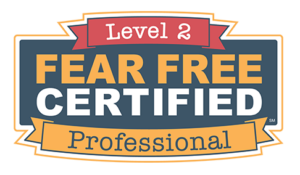
- American Veterinary Medical Association (AVMA)
- International Veterinary Academy of Pain Management (IVAPM)
- American Association of Feline Practitioners (AAFP)
- American Veterinary Society of Animal Behavior (AVSAB)
- American Association of Traditional Chinese Veterinary Medicine (AATCVM)
- Ohio Veterinary Medical Association (OVMA)
Dr. Savier shares her home with two (soon to be three) dogs, two cats, and a toddler. She lovingly refers to her two dogs as Coconut Retrievers as they were rescue dogs she brought home from the island of St. Kitts. In her free time she enjoys spending time with her family, going to the beach, and planning her next Disney vacation.
Join us every month for Dr. Savier’s “From the Vet” series to get more information related to the health and welfare of your furry family members![/vc_column_text][/vc_column][/vc_row]

